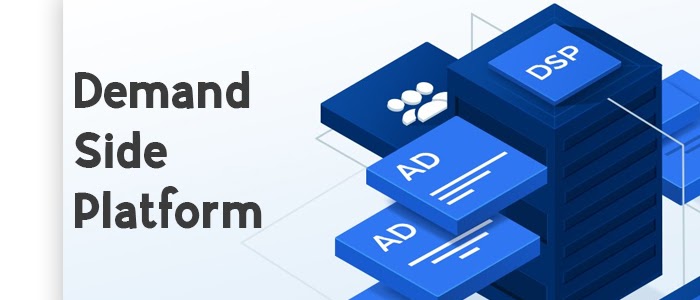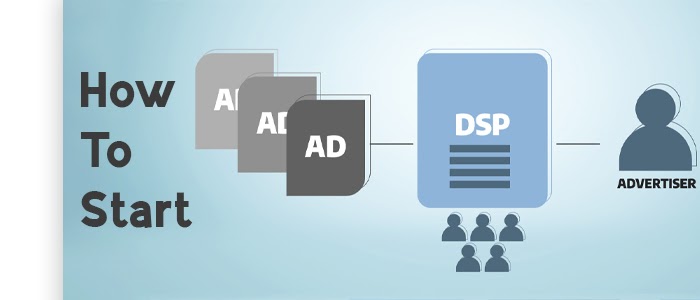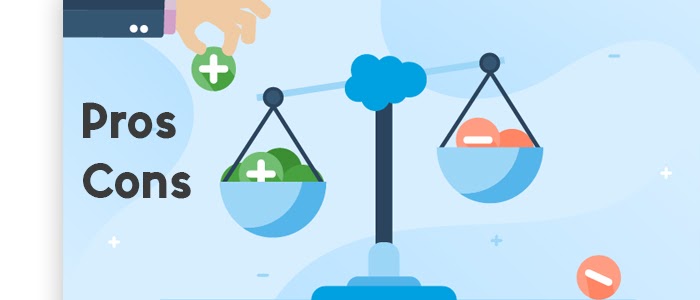
A demand-side platform (DSP) is essential for optimizing CPA campaigns. Learn how to effectively use DSPs to enhance targeting, improve campaign performance, and achieve better results in affiliate marketing.
Automation is everywhere. Today's cars drive themselves, your phone can do most things for you, and DSPs can buy ads instead of people. Yeah! How weird is that?!
With the rise of AI and tech in general, there has been an emerging trend. This trend is leaving most of the busy work to computers to do for you. This of course has its upsides and downsides. On one hand, you might get incredible deals and buys that only real pros and bots can achieve. On the other hand, sometimes the human touch can trump even the best bot. But as always, the tech is improving all the time. Within a few years, the software will automate a big chunk of work that affiliates do.
Currently, the most promising solution for this is DSPs. They have great potential and so far they have proven themselves to be valuable. This point is best proven by the amounts of affiliates utilizing DSPs for buying ads! What is the deal with these systems and how do they function? What is the meaning of DSP, and how does DSP advertising work? Find out right here!
What Are DSPs?
Demand Side Platform (DSP) is a software system that is cloud server-based. It allows agencies, devs, and brands that buy ads from publishers to manage accounts through a single unified interface. They allow advertisers to log in and browse through what they want to buy and make bids in real-time. So simply said, DSPs help you manage your Ad and Data Exchange accounts and buy adverts. DSPs also help automate the purchase of advertising.
Something similar to a DSP, but not quite a DSP are Google Ads and Facebook Ads. Many affiliates use these platforms to buy ads simply and effectively. When deciding what you want to buy, you insert your audience criteria. Age, gender, location, budget, and others. DSPs don’t offer such detailed criteria as that is specific to the Facebook and Google platforms. DPSs will have a lot of other advantages. They can pick their budget, dates, and a lot of advanced features. Things like audience segments, which aren’t as creepy as Facebook tracking.
DSPs can give you tracking features that are not available on other platforms. These can help you find and track your audience throughout the web. You can upload your own custom data sets that can find people like the ones in your sets.
The purchasing of digital ads was always handled by people. But as we all know people can be expensive and unreliable at times. DSPs attempt to solve this issue by removing people from the buying aspect. They try doing everything including negotiating ad rates for you. Demand Side Platforms also offer you a real-time option to auction on ad bids that are currently running. This can give you incredible rates that will make your campaigns cost far less.
What Are CPA Campaigns?
Cost-Per-Acquisition or CPA is one of the most common advertising campaign forms. Sometimes it is also referred to as Cost-Per-Action or Pay-Per-Action (PPA). CPA is a digital advertising metric that measures the cost of taking a specific action.
These campaigns are simple. Marketers pay media sources a fixed amount each time a user clicks on an ad that is running. These clicks don’t have to convert after all. They can pay for any predefined action, like clicks, sign-ups, downloads, and much more.
These campaigns are specialized to adjust to the modern difficulties of online marketing. Not every campaign can lead to conversions. CPA campaigns allow advertisers to pay a fraction of the price that conversions would cost to affiliates. This can be done through sign-ups, clicks, conversions, or anything else. These can provide the advertisers with incredible data. They can later use this data for retargeting campaigns.
CPA campaigns are a great asset in the toolset of affiliates. It is considered to be one of the ideal metrics to determine the return on investment. It allows you to track and measure data valuable for advertising. It can also control advertising costs since it allows you to charge for specific actions.
How Should You Start With DSP and CPA?

First of all, you have to choose a DSP platform. When doing this you should consider the following:
- What kind of inventory does the platform have access to?
- How many inventory sources does it have access to?
- Does it have access to add, mobile web inventories?
- What kind of third-party data integration does it support?
- What kind of targeting options are available?
- What kind of optimizations and algorithms does the DSP use?
- What kind of support do they offer?
After limiting your choice to a few DSPs, it’s time to do your research and pick one that is the best fit for you.
Making your CPA campaigns is simple. You follow the platform’s UI and create a campaign. If you can select the targeting or input your custom data that might help with the targeting. After that set max limits for your campaign and let the algorithm do its thing. It should set initial bids, check the quality of the ads, and attempt to optimize your campaigns.
DSPs should provide you with some detailed stats and info. You can use it to help the algorithm and tweak it a bit to make it more efficient.
Why Are They Great Together?
Demand-side platforms and cost-per-action campaigns work well together. With proper usage, DPSs can lower the cost per acquisition and make campaigns far more profitable.
A popular thing to do to CPA campaigns is optimization. These can reduce your CPA costs and help your advertising campaigns thrive. Things to look out for when optimizing are:
- Landing page optimizations
Landers are the first thing users see when they click on your ads. You need to make sure that these landers are as good as possible. Consider techniques like A/B testing to determine what works the best in each individual case. - Retargeting
Sometimes your potential leads don’t want to purchase at a given moment. But this doesn’t mean that they are completely out of the game. Since they are your leads, they show some kind of promise. Retargeting them is a surefire way to try and convince them again to buy your product or service. - Improving the Quality Score
Google rates everything and these ratings are used in their internal algorithms. Increasing your quality score should be a priority. This can be done by creating relevant keyword groups and making relevant content. - Improving the ad copy
The copy of your ads can make or break your ad campaign. This means that it’s important to keep the copy up to date as well as relevant for the product you are trying to sell. Sometimes affiliates don’t write aggressively enough. Affiliates should check if their copy is giving a strong impression to help drive sales. - Increasing Email lists
Email marketing is a tried and true method. It is affordable, easy to do, and it works, so you should stick to it.
While all these are great and incredible by themselves, the combination of them is what makes them great. If you want to optimize the CPA costs further, you will need to use DSPs to lower your bidding costs. All this also merges well with the automated media bing and automation. This combination offers incredible optimizations as well as real-time advertisement buying. These can help lower bids.
What Are the Pros And Cons of DSP?

As anything, Demand Side Platforms have their advantages and disadvantages. Affiliates should know about these and use the software accordingly. Since investing in the software can be quite costly, you should know the details before doing so.
Pros:
- DSPs are efficient at managing campaigns across many networks. You can adjust everything from one dashboard. With a few clicks, you can see the changes across your campaigns. This makes things much simpler and easier to keep track of.
- Data management is also made much more simple through the use of DSPs. They offer extra and much more detailed stats and information to advertisers. Most DPSs also allow the import of custom data.
- Demand Side Platforms have access to major networks. That access can help them gain better and higher-quality inventory. The majority of premium inventory can be found on DSPs, so most pro affiliates use it for that reason alone.
- Targeting is another area where DSPs can help advertisers. They can provide many more targeting capabilities for the users. Better and more efficient targeting leads to better ads, more clicks, and more profits. Conversion rates improve a lot by better targeting as well.
- Support is also a thing Demand Side Platforms excel at. They usually provide much better help and insight into problems than networks. This can lead to quicker and more efficient problem-solving. And most importantly, less confusion during the whole process.
Cons:
- DPS are not the most simple software solutions. While they make a lot of things easier and more streamlined, some things get more complex. The biggest cause of this is the extra data points and data sets. This is mostly true for beginners who might feel overwhelmed by the feature set alone.
- Demand Side Platforms can cost a hefty sum. They need some up-right investment into them. Your ad spend should be north of $5,000/mo if you even want to consider using them. If your monthly budget is a lot lower, you should consider alternatives. These alternatives can be things like Google Display Network.
The Key Takeaways for DSPs and CPA Campaigns
Advertising is all about increasing revenue and decreasing spending. This can be done in a plethora of ways. A great and modern software solution that aims to help with this is Demand Side Platforms. If advertisers use these solutions with their regular optimizations, they can get incredible bids. This lowers their costs dramatically while increasing the return on investment.
For some businesses and campaigns, DSPs can be incredible tools that can boost the ROI many times. But for others, it will be a colossal waste of time and money. As always do your research beforehand and reap the benefits!
Have you ever used DSPs? What is your experience with them?
Please log in to Facebook to access the comments section